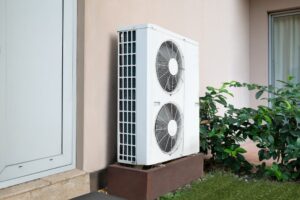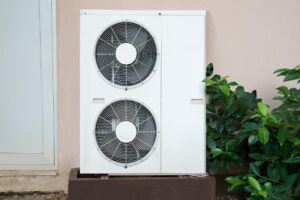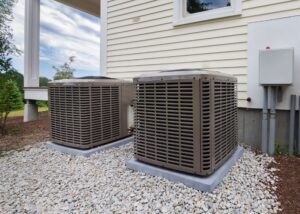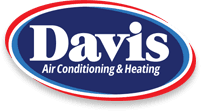7 Heat Pump Components in Damon, TX and What They Do
A heat pump is a system of components that condition your Damon, TX home’s air. When you understand the most critical of these components, you can extend your system’s efficiency and service life. Discover seven of the most critical components and what they do to make your system run well.
1. Compressor
The compressor does exactly what its name suggests: it compresses. In this particular case, it compresses the refrigerant that’s used to heat and cool your home. The system must have the proper amount of refrigerant, which can cause heat pump repairs when there’s too little.
The refrigerant absorbs heat when it has low pressure and is cool. The compressor increases the refrigerant’s pressure, causing the refrigerant to heat up. It then vents that heat either inside or outside your home, depending on whether it’s in heating or cooling mode.
2. Indoor and Outdoor Coils
Your system has an indoor and outdoor coil, commonly called the evaporator and condensing coils in a central air system. The reversing valve allows the refrigerant in the system to change between heating and cooling.
The evaporator coil is the one that gets cold, allowing the low-pressure refrigerant to absorb heat. The condensing coil gets hot from the compressed refrigerant, allowing it to vent the heat that was absorbed. These coils must remain clear and clean so that air can flow through them.
3. Air Handler
The air handler draws air into the system to condition it and then circulates it throughout your home. Within the air handler, you have the circulating fan and blower motor, both of which must receive routine maintenance. The fan wheel must receive routine cleaning and balancing, while the motor needs testing and lubricating.
4. Reversing Valve
The unique function of a heat pump is that it can both heat and cool your home. The reversing valve is the component that gives it this unique capability.
This valve changes how refrigerant flows through the system after it goes through the compressor. In heating mode, the valve directs the high-pressure refrigerant into the coil inside your home.
In cooling mode, it directs it to the coil in the outside unit. The reversing valve may also activate to help defrost the system if it freezes up, usually during colder weather.
5. Expansion Valve
To get cool and absorb heat, the refrigerant must go through a process of lowering its pressure. The expansion valve controls how much refrigerant flows into the low-pressure side of the system.
This valve restricts the refrigerant flow, allowing it to expand as it enters the coil, which makes it cold. If you’ve ever used a can of compressed air, the same thing happens. You expel the air inside, which allows what’s left to expand and get cooler.
6. Auxiliary Heating
Every heat pump has a secondary heating source in case the temperature outside gets too cold. In frigid temperatures, the outside coil can’t get cold enough to absorb enough heat to warm your home.
The standard auxiliary heating is an electrical resistance heater that’s located within the air handler unit. In more efficient systems, you may have a dual-fuel unit, which uses a gas furnace for an auxiliary heater. Dual-fuel systems are often less expensive to run during frigid weather than their electrical resistance cousins.
7. Control Board
While the thermostat tells the heat pump if it should run, the control board operates the system. This receives all the inputs from sensors around the system and controls when various components activate. It’s also the control board that triggers the heat pump to initiate the defrost mode when necessary.
All of these parts work as a single unit to help heat or cool your home throughout the year. You can only achieve your system’s peak efficiency when it’s properly maintained and kept in good repair. Call to schedule your heat pump maintenance or repair with our expert technicians at Davis Air Conditioning & Heating, Inc.
Image provided by iStock
You May Also Like

3 Signs of a Failing Heat Pump Compressor in Pasadena, TX
Since the compressor is arguably the single most important part of your heat pump, any malfunctions that it experiences can impede the… Continue Reading 3 Signs of a Failing Heat Pump Compressor in Pasadena, TX…

6 Mistakes To Avoid With Your Heat Pump in Pasadena, TX
Heat pumps offer an efficient way to keep your Pasadena, TX home comfortable. However, you’ll only get the most out of yours… Continue Reading 6 Mistakes To Avoid With Your Heat Pump in Pasadena, TX…

Why Is Hot Air Coming From My AC in Webster, TX?
The purpose of your air conditioner is to keep your Webster, TX home cool throughout the warmer months. Therefore, if your system… Continue Reading Why Is Hot Air Coming From My AC in Webster, TX?…
